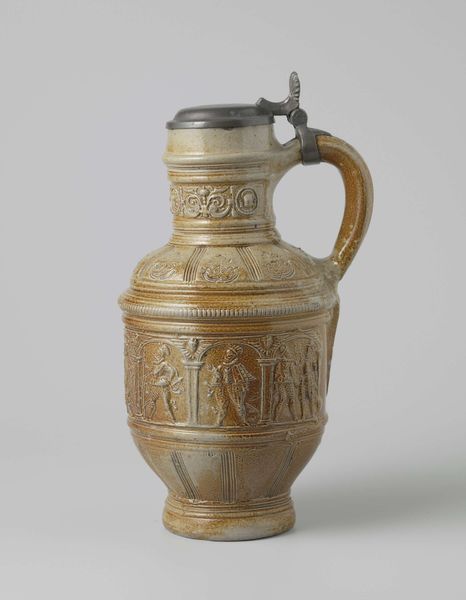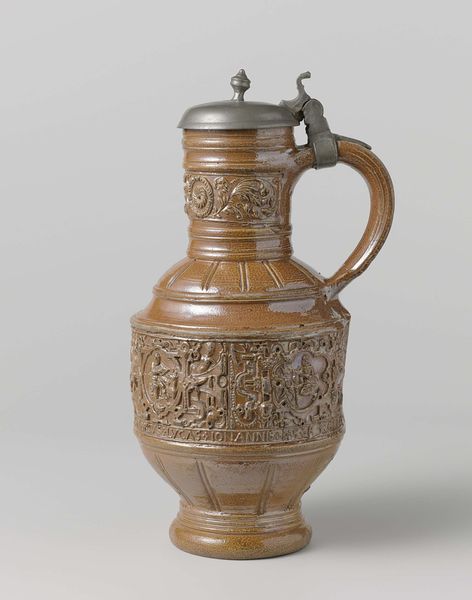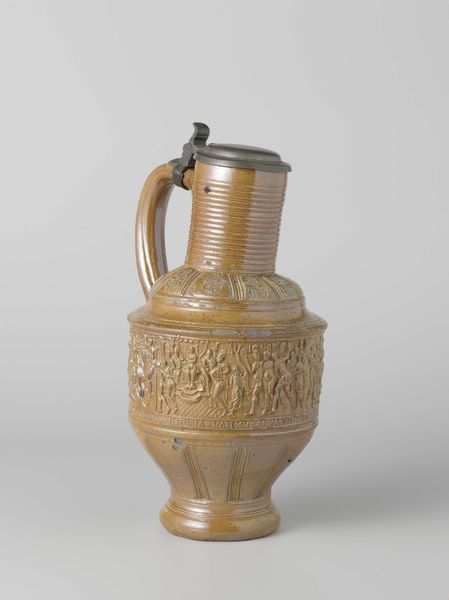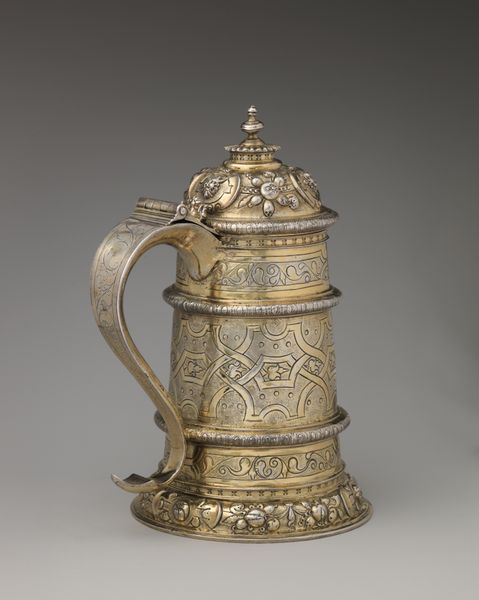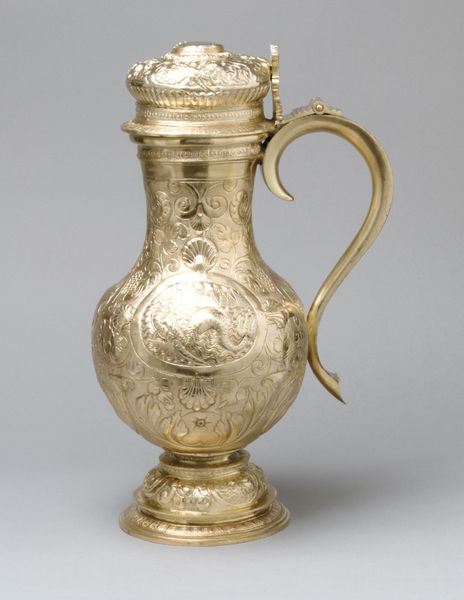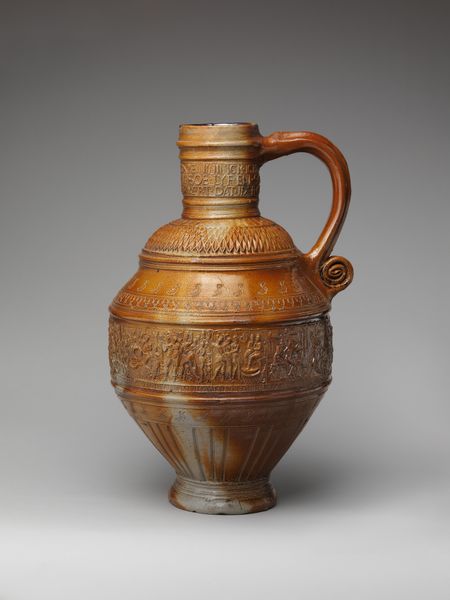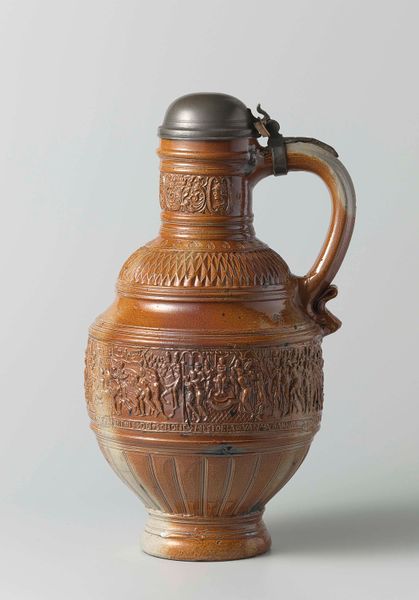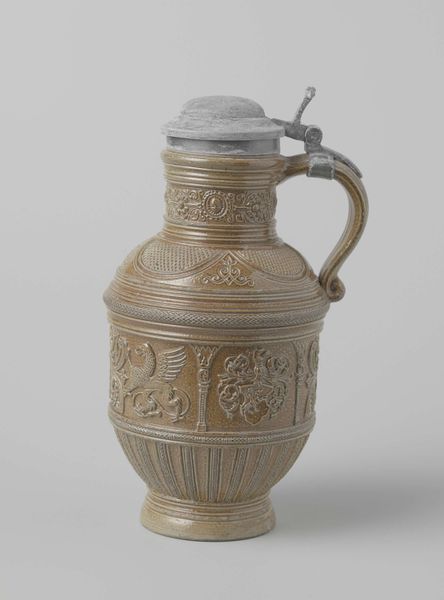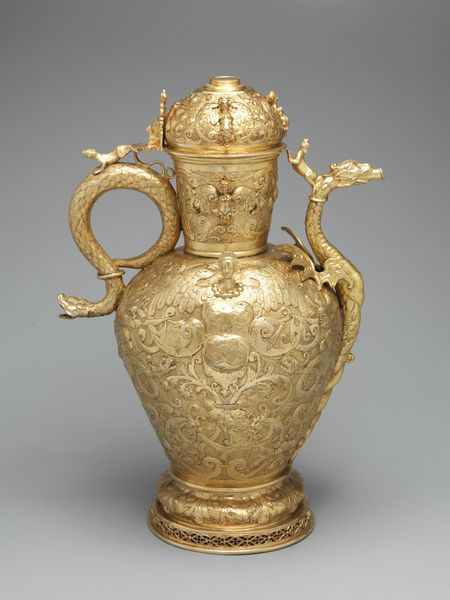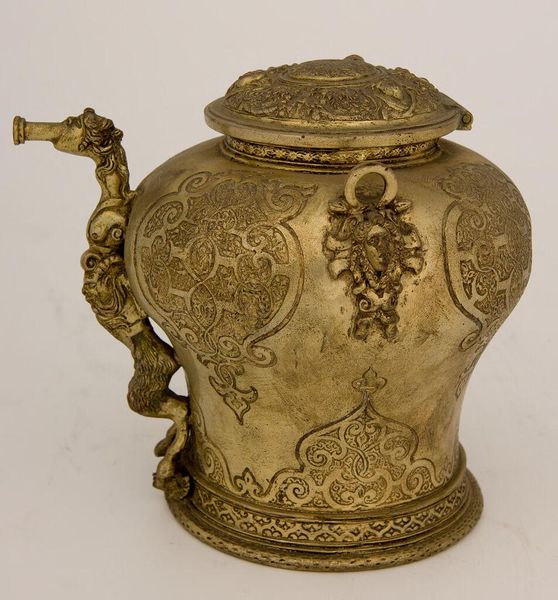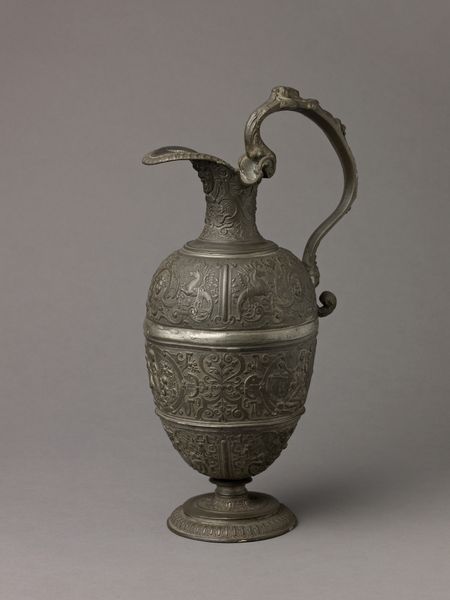
relief, ceramic, earthenware, sculpture
#
baroque
#
relief
#
ceramic
#
figuration
#
earthenware
#
stoneware
#
sculpture
#
ceramic
Dimensions: height 31.1 cm, height 27.4 cm, diameter 7.8 cm, diameter 12.9 cm, diameter 8.5 cm, width 15.6 cm
Copyright: Rijks Museum: Open Domain
Editor: Here we have a stoneware jug made between 1602 and 1620, called "Jug with a representation of the electors." The reliefs seem incredibly detailed for such a utilitarian object. How do you interpret this work in its historical context? Curator: It's essential to consider this jug not merely as a vessel, but as a potent symbol of political and social dynamics of the early 17th century. The detailed reliefs, depicting the electors, elevates this object beyond the domestic sphere into one of political commentary. This isn't just decoration; it's a visual assertion of power and identity within a complex social structure. What questions does the imagery evoke for you? Editor: Well, I wonder, who was this jug made for? Was it for someone aligned with the electors, or was it perhaps meant to subtly critique them? Curator: That's exactly the right question! The function of art in that period often intertwined with social and political messaging. This jug could have served multiple purposes depending on its context: as a display of allegiance, a symbol of regional identity, or even as a conversation piece that enabled discussion around power structures. The Reformation's impact is tangible; material culture was now imbued with socio-political statements. Does the craftsmanship itself tell you anything about the intended audience? Editor: The high level of detail suggests it was meant for someone with means. It seems too elaborate for everyday use by the common person. Curator: Precisely. And think about the material. Stoneware was durable, but creating detailed reliefs required skilled artisans, placing it within reach of a particular class. Consider also, whose stories are not being told? Editor: I guess it offers a glimpse into the lives of the powerful, but not really those who made the jug, or of the common people who would never own it. Curator: Exactly. Art objects like this provide such valuable clues if we situate them within the historical tapestry of identity, power, and social critique. I wonder, what narratives might *we* inscribe upon such a jug today? Editor: I see it now. Thank you! I never thought I'd consider a jug this way.
Comments
No comments
Be the first to comment and join the conversation on the ultimate creative platform.
